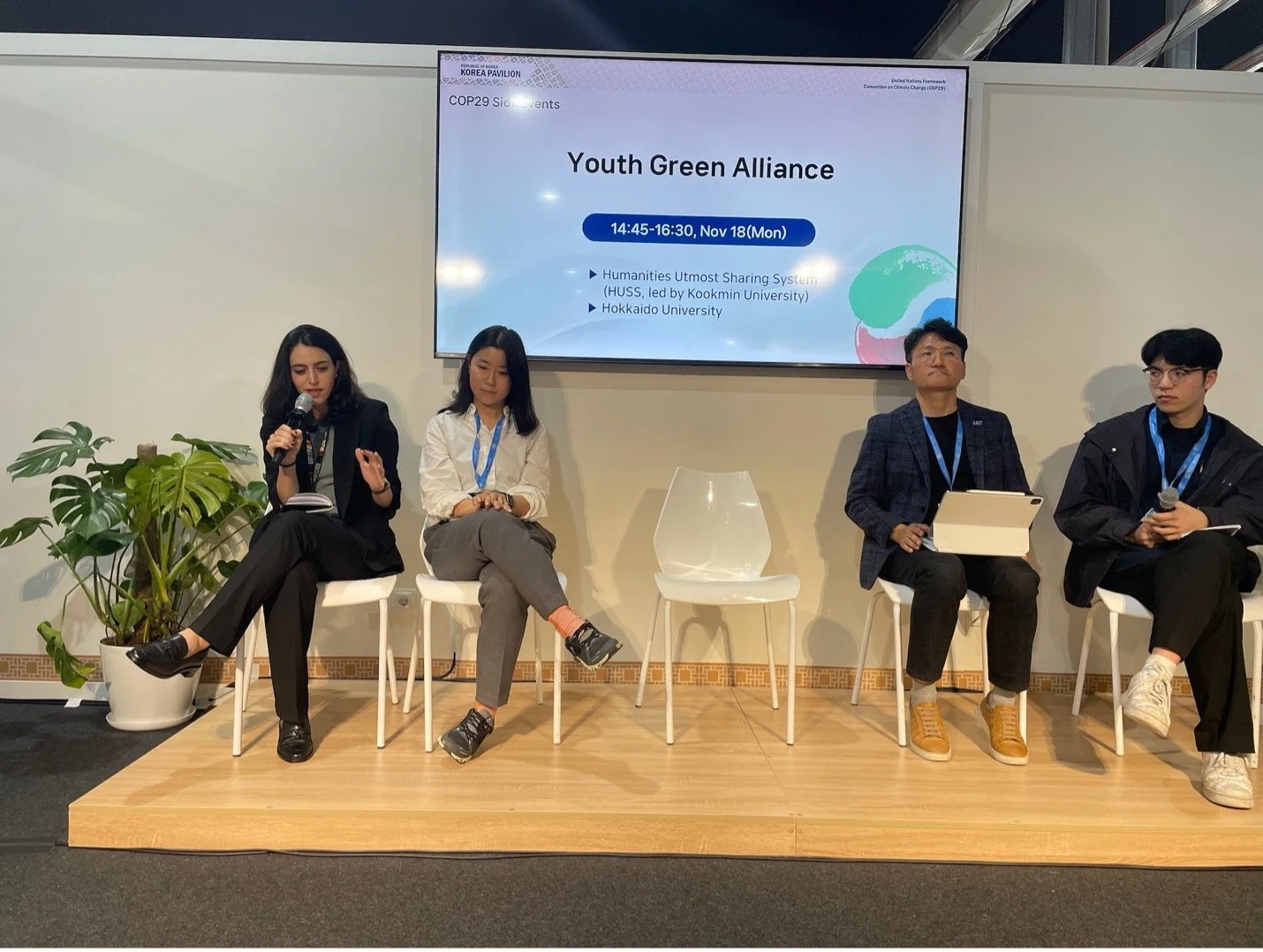Reflections on COP29
By Sophie Lehrenbaum
COP 29 in Baku, Azerbaijan, was a conference defined by contradiction. The location itself is laced with a trichotomy of old, older, and brand new; the old city is almost carelessly riddled with 1,300-year-old relics from the Persian empire, while the remainder of Baku’s architecture largely harkens back to its time as a constituent republic of the Soviet Union, from 1922 to 1991. Soviet-era construction is punctuated by extremely modern development, with Zaha Hadid’s buildings sprinkling the skyline.
The irony of a petrostate hosting the world’s largest annual climate conference was dominating as well, with news outlets simultaneously providing updates on the state of negotiations while also reporting on crude oil spa treatments offered in Baku. The host country, Azerbaijan, also seized the opportunity to engage in rampant greenwashing, propping up sparkling electric charging stations in high foot-traffic and high-visibility locations, in a city where, beyond the COP 29-specific electric bus fleet, there were no electric vehicles in sight. Squadrons of brand-new electric scooters stood alert, not a single one out of place during rush hour, while smog continued to permeate the air of the city where the world’s first industrial oil well was drilled in 1847.
The complicated web of contradictions was also visible in the COP 29 negotiating arena. As countries decried the state of the global climate targets and reiterated the importance of global cooperation on climate, we saw delegations sent home, governments lambasted, and procedural rules enacted to kick decision-making down the road for certain orders of business. As an example, decisions regarding the loss and damage fund were victims of rule 16, meaning they will be readdressed in June 2025. While some countries settled on a new climate finance goal of $300 billion a year, others chided their counterparts for suggesting that this figure was anywhere near sufficient compared to the trillions of dollars required for nations in the global south to transition their energy systems.
Another undertone that permeated conference programming was the impact of the U.S. presidential elections and the resultant inevitable withdrawal from the Paris Agreement. In a telling departure from the prevailing image of an oil executive, participants witnessed the CEO of Exxon Mobil imploring the incoming administration to stay in Paris. This plea, from the head of a fossil fuel behemoth, makes sense when considering the need for policy continuity and predictability for business planning and investment purposes, but otherwise seems wholly unnatural. And while, from the perspective of a student of climate and energy policy in the U.S., the re-ascension of this administration marks what will be an at least four-year-long pause in U.S. leadership on climate action, COP29 actually provided unexpected catharsis.
For me, this catharsis was delivered in the form of two panels I spoke on–one around trilateral climate cooperation between Japan, South Korea, and the United States, and another on renewable energy systems, and in particular, offshore wind. Both panels forced me to grapple with the future of U.S. climate policy and, in the end, actually enabled me to feel less doom-and-gloom and resigned to inaction. Unquestionably, the United States has a responsibility to contribute to collective global climate action, as the largest historical emitter of greenhouse gases. However, there is so much inertia driving climate action that, despite what is a dereliction of duty on the part of major polluters, progress will continue to be made. Even within the United States, subnational actors, like states, cities, and the private sector, will continue to push forward on climate solutions. Perhaps new policy windows will open to deploy renewable technologies or build out clean energy supply chains. We will just need to focus on pulling different levers to meet the moment and drive the change that needs to happen.
Sophie Lehrenbaum is a MALD student at The Fletcher School, Tufts University.


